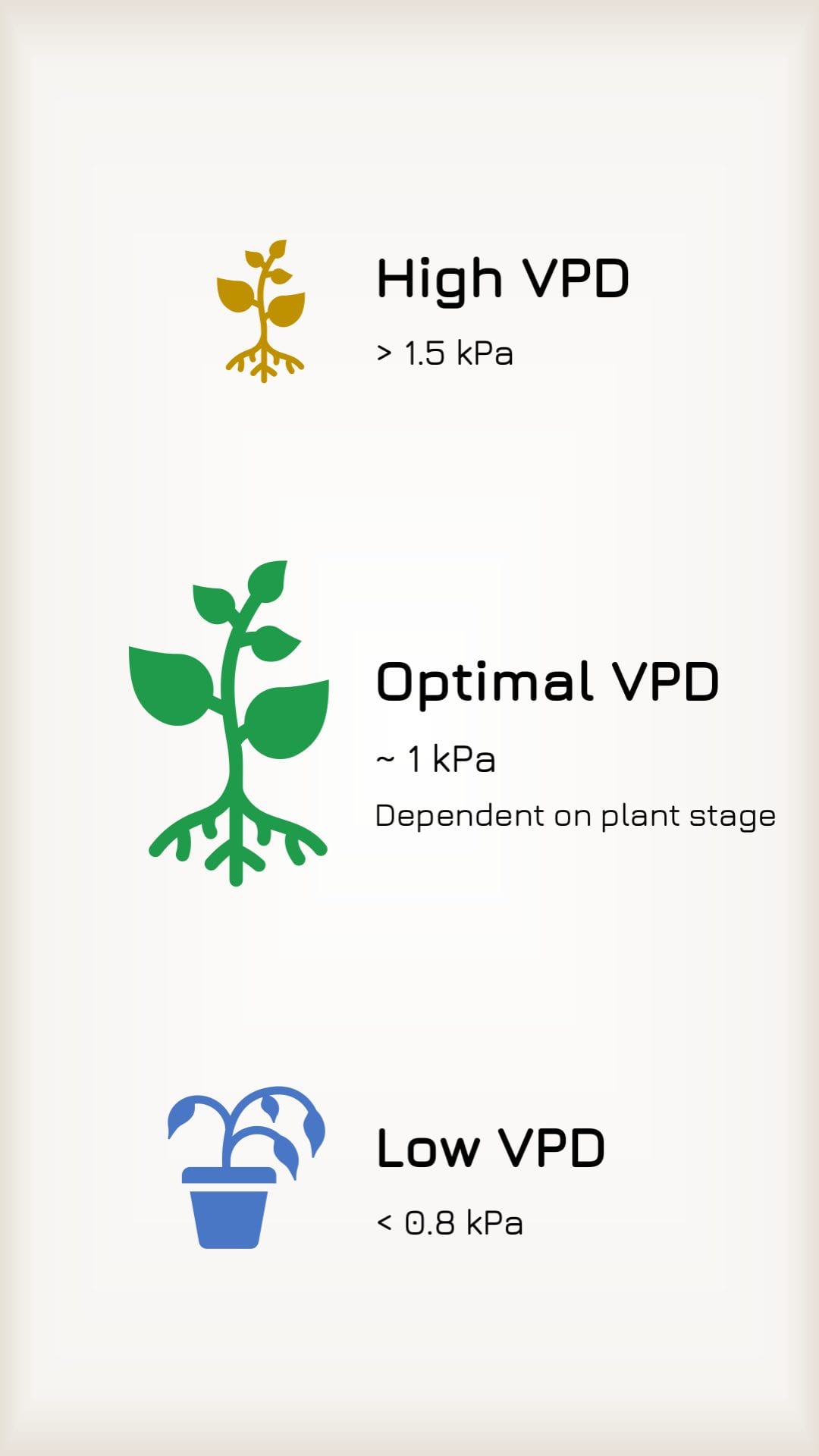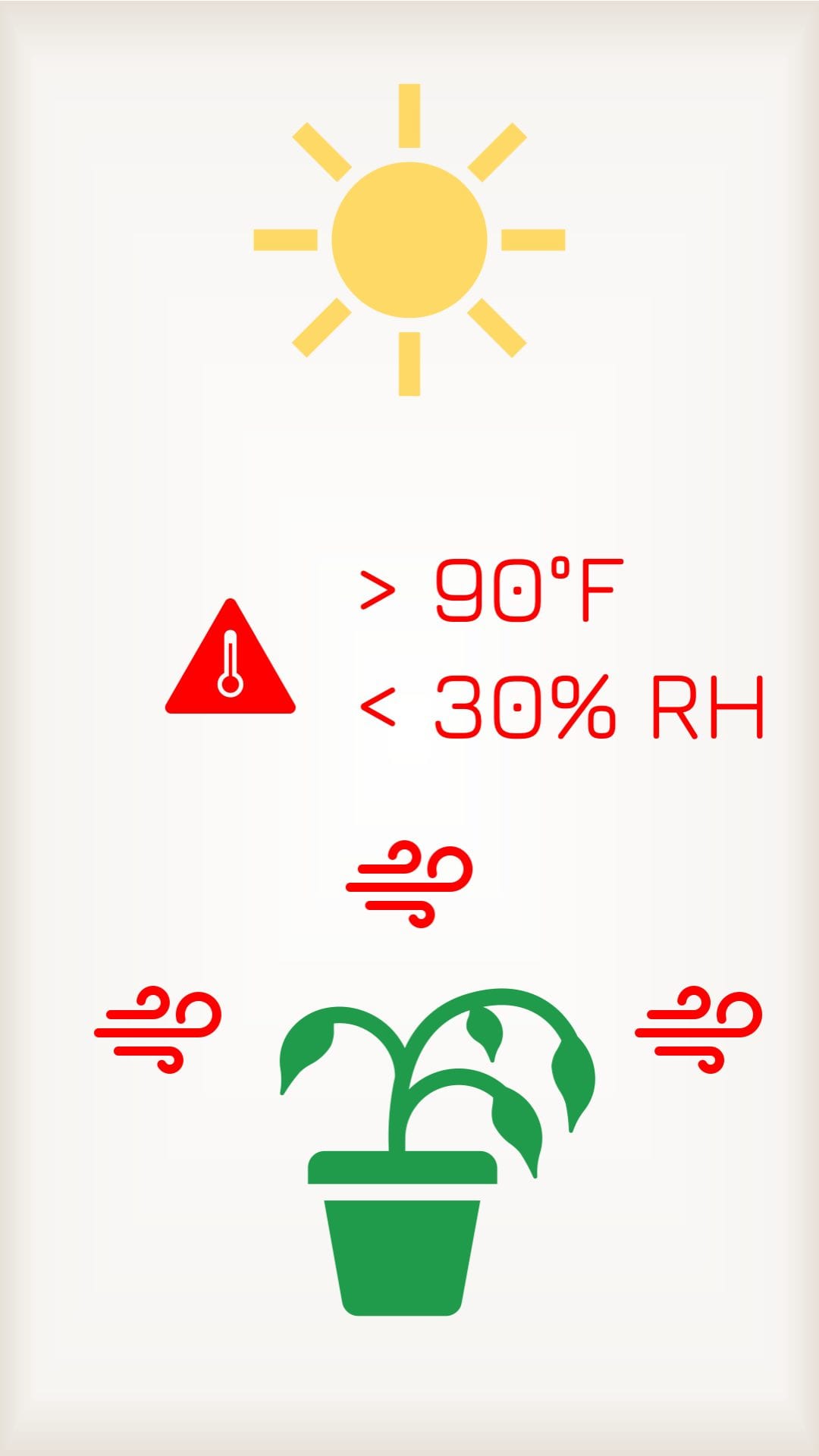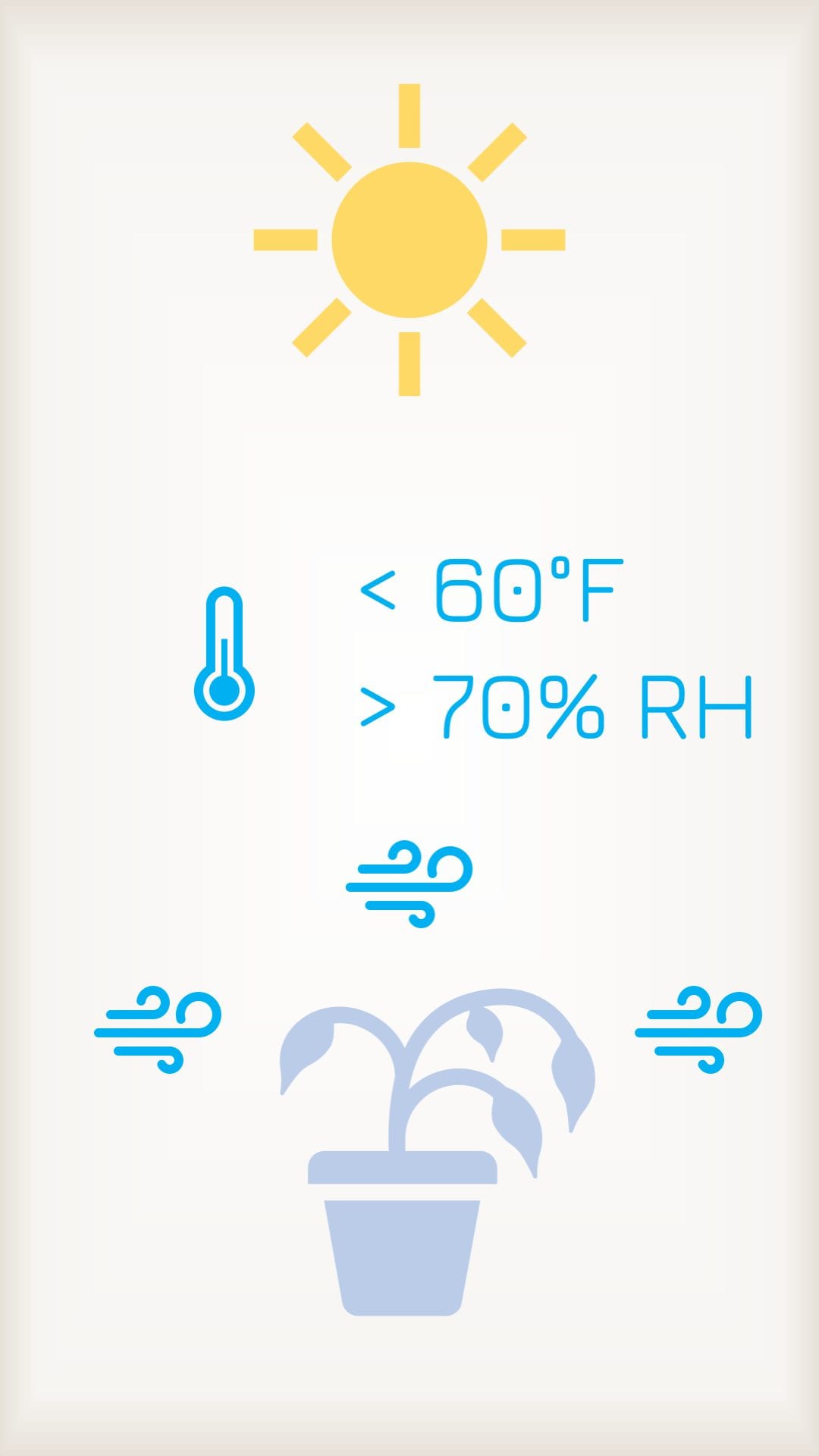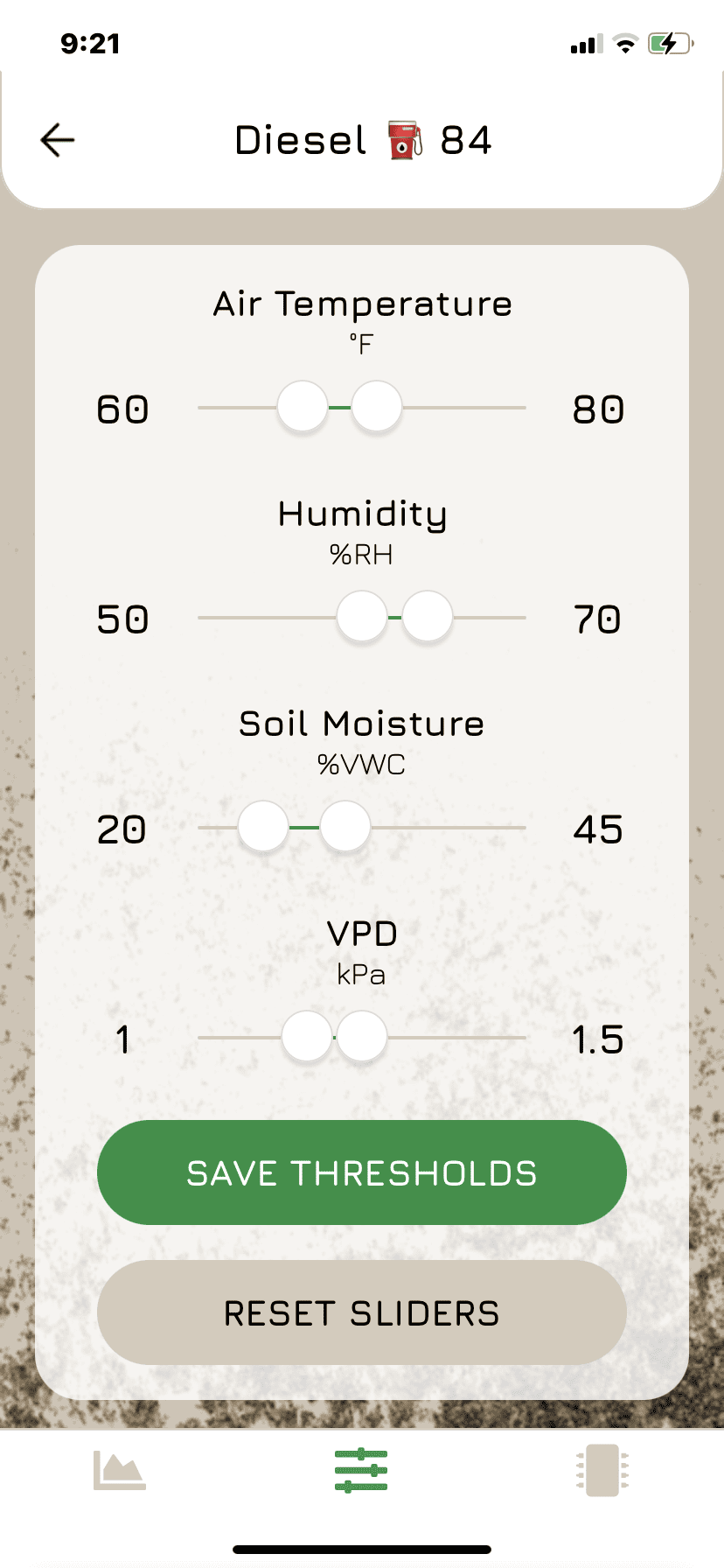What is VPD?
Vapor pressure deficit (VPD) is how much additional water vapor can be held in the air. Air can hold more water at higher temperatures, so it is a function of air temperature and humidity. The VPD of the air is usually just a bit higher than the VPD found at the surface of your plant’s leaves due to the leaves having a slightly cooler temperature.
High temperatures and low humidity lead to high VPD. This causes plants to transpire faster (think of sweating) and can stress plants out. Also a plant’s stomata (pores in the leaves) shrink and don’t allow the plant to take in as much CO2. In humans this would be the equivalent of not being able to breathe as much oxygen. These factors are why you may see a plant wilt in hot and dry conditions.
Low temperatures and high humidity lead to low VPD. This sometimes is not as dangerous as high VPD because it is not as stressful to the plant. However, the plant will transpire less and in turn take in less water and nutrients from the root system. Like the case of high VPD this will also lead to less overall plant growth.

Dangers of High VPD
High temperatures and low humidity lead to high VPD. This causes plants to transpire faster (think of sweating) and can stress plants out. Also a plant’s stomata (pores in the leaves) shrink and don’t allow the plant to take in as much CO2. In humans this would be the equivalent of not being able to breathe as much oxygen. These factors are why you may see a plant wilt in hot and dry conditions.

Danges of Low VPD
Keeping the air around your plants at an optimal VPD level will lead to maximum plant growth. Using the Growbud app you can set a low and high threshold for VPD, and the app will alert you if the sensor detects conditions are out of range.
Low temperatures and high humidity lead to low VPD. This sometimes is not as dangerous as high VPD because it is not as stressful to the plant. However, the plant will transpire less and in turn take in less water and nutrients from the root system. Like the case of high VPD this will also lead to less overall plant growth.

The Growbud app has a default range, and in general if you keep your VPD close to 1.0 kPa your plant will be okay. To unlock maximum plant growth you can research your plant’s optimal levels for each stage of growth and use the Growbud app to help maintain those levels. In the event you get an out of range VPD alert from the Growbud app you can follow these steps:
Low VPD Action Plan: To increase your VPD and unlock maximum plant growth it is advised to increase the air temperature, decrease the humidity, or both until your VPD is back to a good level.
High VPD Action Plan: To decrease your VPD and unlock maximum plant growth it is advised to decrease the air temperature, increase the humidity, or both until your VPD is back to a good level.

